The Cavapoo is a crossbreed between the Cavalier King Charles Spaniel and the Poodle. It is as varied in its color palette as in its irresistible charm. Coming in an array of colors ranging from the rarer shades like Merle, phantom, and sable to the more common ones like cream, tan, and red, each Cavapoo brings a unique hue to the breed’s rainbow of colors. The diverse Cavapoo colors and patterns, a result of the genetic contributions from its parent breeds, adds to the personality of what makes the breed a delightful and distinctive companion.
In this article, we will explore the Cavapoo colors, the origin of this mixed breed, and other characteristics of the Cavapoo.
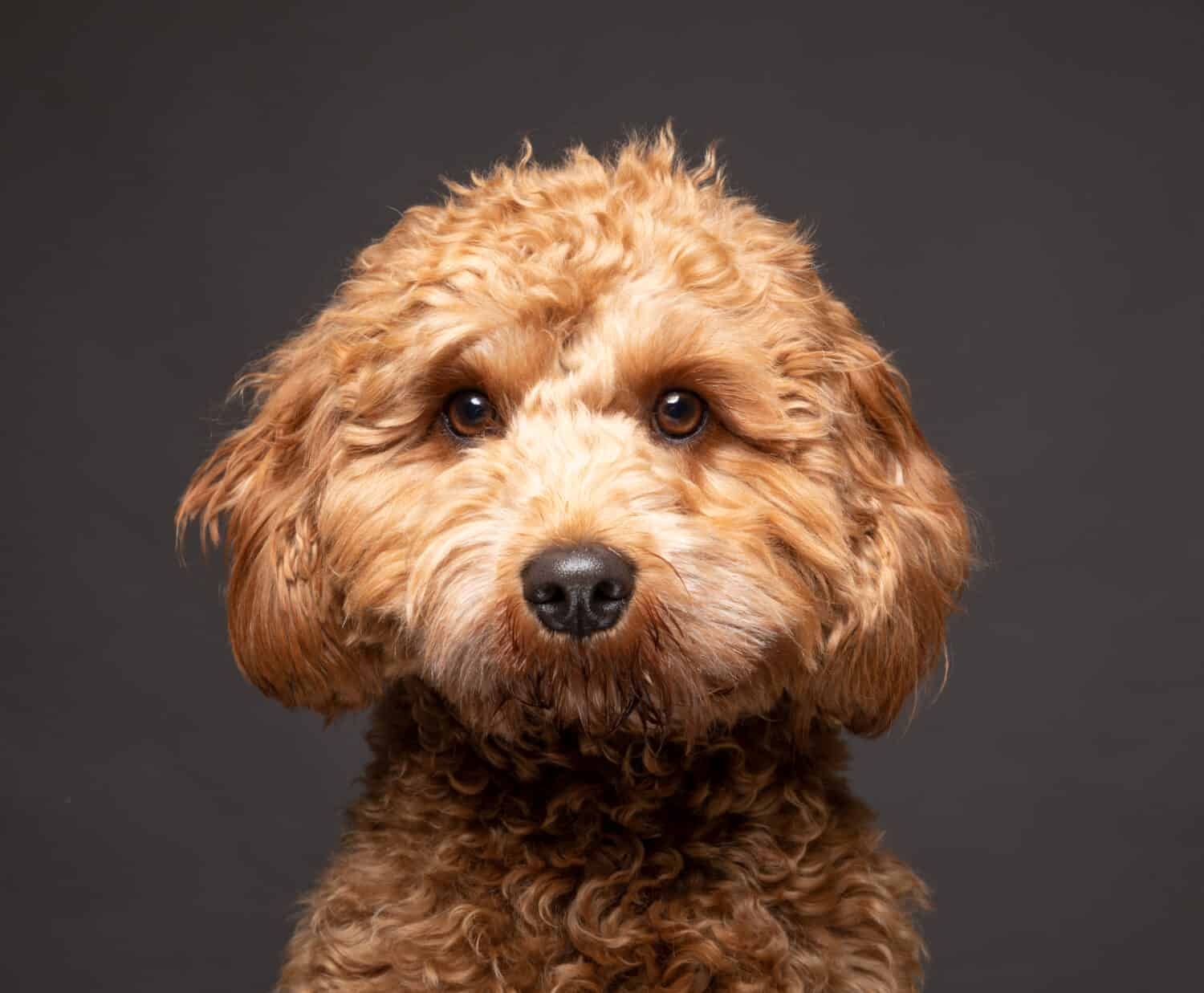
Cavapoos are a mixed breed consisting of the
Cavalier King Charles Spaniel
and the Poodle.
©David Calvert/Shutterstock.com
History and Origin of the Cavapoo
The Cavapoo, a delightful crossbreed of the Cavalier King Charles Spaniel and the Poodle, has stolen many hearts with its irresistible charisma. Despite its recent surge in popularity, the origin and history of the Cavapoo are less well known. A fascinating blend of two breeds, each with a rich history, the Cavapoo carries the legacy of comfort, hunting prowess, and entertainment.
The Cavalier King Charles Spaniel
This breed has an interesting history blended with other breeds known under the King Charles Spaniels breed. The Cavalier King Charles Spaniel developed from the King Charles Spaniel breed in the early 1900s in an attempt to bring back the original and rare elongated nose of the King Charles Spaniels of the 1600s. They are known for their friendly demeanor, striking coat colors, and expressive eyes.
The Poodle
The Poodle also has an interesting origin story. According to the American Kennel Club, despite its association with France, the Poodle’s roots trace back to Germany. Breeders bred them as water retrievers, known for their ability to fetch waterfowl for hunters. Later, this breed garnered fame in French circus performances thanks to their high intelligence, agility, and trainable ability.
The Cavapoo
The merger of these two distinguished breeds was not a random act but rather a deliberate move by breeders to create a dog that combined the Cavalier King Charles Spaniel’s friendly nature and the Poodle’s intelligence and hypoallergenic coat. It is believed that Cavapoos originated in Australia during the 1990s. This timeframe aligns with the broader trend of creating designer breeds to encapsulate the best traits of purebred parents.
The Cavapoo quickly gained popularity due to its small size, affectionate nature, and somewhat hypoallergenic coat. Their intelligence, inherited from the Poodle side, made them easy to train, and their sociable temperament, a trait of the Cavalier King Charles Spaniel, made them excellent companions. Their adaptability to various living conditions and their low-shedding coats made Cavapoos an excellent choice for families, seniors, and people with allergies.
Over time, the Cavapoo has maintained its popularity as a companion dog and family pet. Today, they are celebrated for their beauty, represented by a myriad of coat colors and patterns, and their intelligence and friendliness. Cavapoos are increasingly prevalent in the United States, Canada, and the United Kingdom, reflecting the ongoing demand for this affectionate and adaptable breed.
The history and origin of the Cavapoo breed are a testament to the best traits of its parent breeds. This beautiful crossbreed, with roots in comfort and entertainment, combines the friendly nature of the Cavalier King Charles Spaniel and the intelligence of the Poodle to create an irresistible, lovable companion. The Cavapoo’s increasing popularity worldwide reaffirms the success of this genetic blend, proving that this crossbreed’s charm and affability truly stand the test of time.
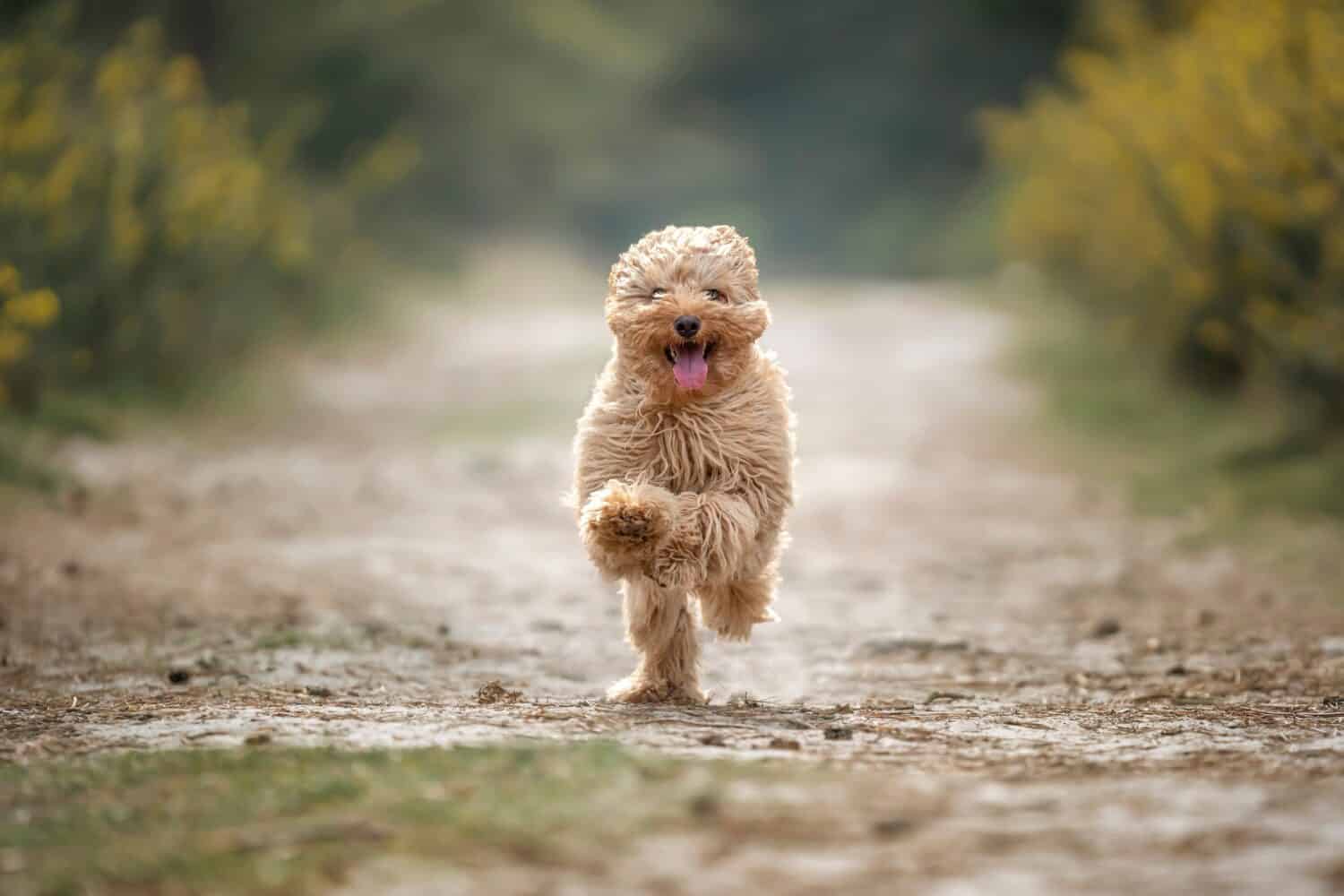
Cavapoos have a kind and friendly temperament and require lots of exercise and stimulation.
©chrisukphoto/Shutterstock.com
Cavapoo Colors
The Cavapoo, also known as Cavoodles, are a popular crossbreed between Cavalier King Charles Spaniels and Poodles. The breed has captured the hearts of pet enthusiasts with its cuddly disposition, intelligent eyes, and adorable features. Part of their charm is the array of coat colors these adorable creatures can sport, ranging from rare to common. However, the variation in Cavapoo colors depends mainly on the genetic contributions of the parent breeds. It’s important to note that there’s no definitive ranking for the rarest to the most common Cavapoo colors, as coat color can vary significantly from litter to litter. However, we can gather a general overview based on breeding patterns and observations. Here is an overall ranking from the most common to the rarest Cavapoo colors.
Cream
The most common Cavapoo color is arguably cream. This coloring aligns with the dominant color genes from both the Cavalier King Charles Spaniel and the Poodle. Cream Cavapoos can range from a light or rich cream color to a light beige or tan. Sometimes, they can also exhibit subtle spots or patches of other colors, creating an appealing contrast to their overall light coat.
Golden or Apricot
Moving on to the more common Cavapoo colors, we find the golden or apricot hues. This warm, golden color can vary in intensity, ranging from a deep apricot or gold to a light, creamy golden shade. This color is quite popular and is associated with the Poodle’s influence on the genetic makeup of Cavapoos. Apricot Cavapoos can sometimes have white or cream markings, adding to their overall charm.
Tan
Tan Cavapoos are an enchanting sight. The tan coloration can range from a light, creamy tan, akin to the color of sand, to a richer, darker tan that might be more of a caramel or toffee color. This tan coloring is relatively common and can be found in both parent breeds. Tan Cavapoos may also have patches of white, particularly on their chests, paws, or the tips of their tails, adding a unique touch to their appearance.
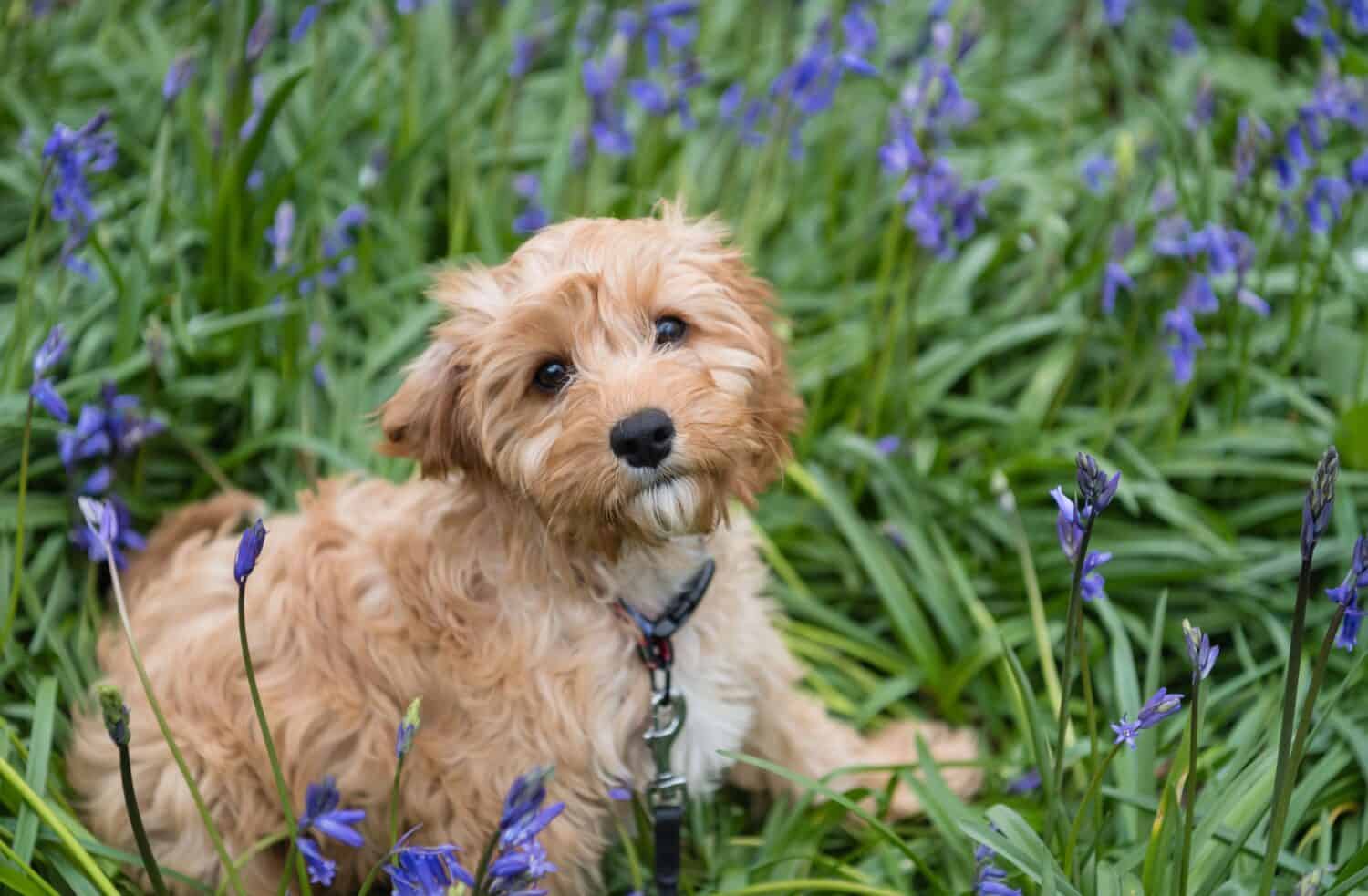
Tan Cavapoos can range from a light sand tan to a darker caramel tan color.
©Wirestock Creators/Shutterstock.com
Red
Red Cavapoos, on the other hand, are a striking shade reminiscent of a glowing sunset or a burning ember. These are less common than their tan counterparts, as the red gene is less dominant in the parent breeds. The depth of the red color can vary greatly, from a light, ruby hue to a deep, russet red. Red Cavapoos may sometimes have white markings, particularly on the chest and paws.
Parti-Color
The particolored Cavapoos are a delightful variety, featuring a coat of at least 50% white with patches of any other color. This pattern is generally more common in Poodles than Cavalier King Charles Spaniels. It can combine with any of the other colors mentioned. For example, a particolored Cavapoo could be predominantly white with large patches of apricot or cream.
Sable
Sable Cavapoos boast a coat color reminiscent of a warm, honey-gold hue. The sable pattern features black-tipped hairs, giving the coat depth and contrast. It’s another less common coloring for Cavapoos, given that neither Poodles nor Cavalier King Charles Spaniels are predominantly sable. Sable Cavapoos can range from a light honey shade to deep, rich gold with noticeable black tips, especially evident around the ears and tail.
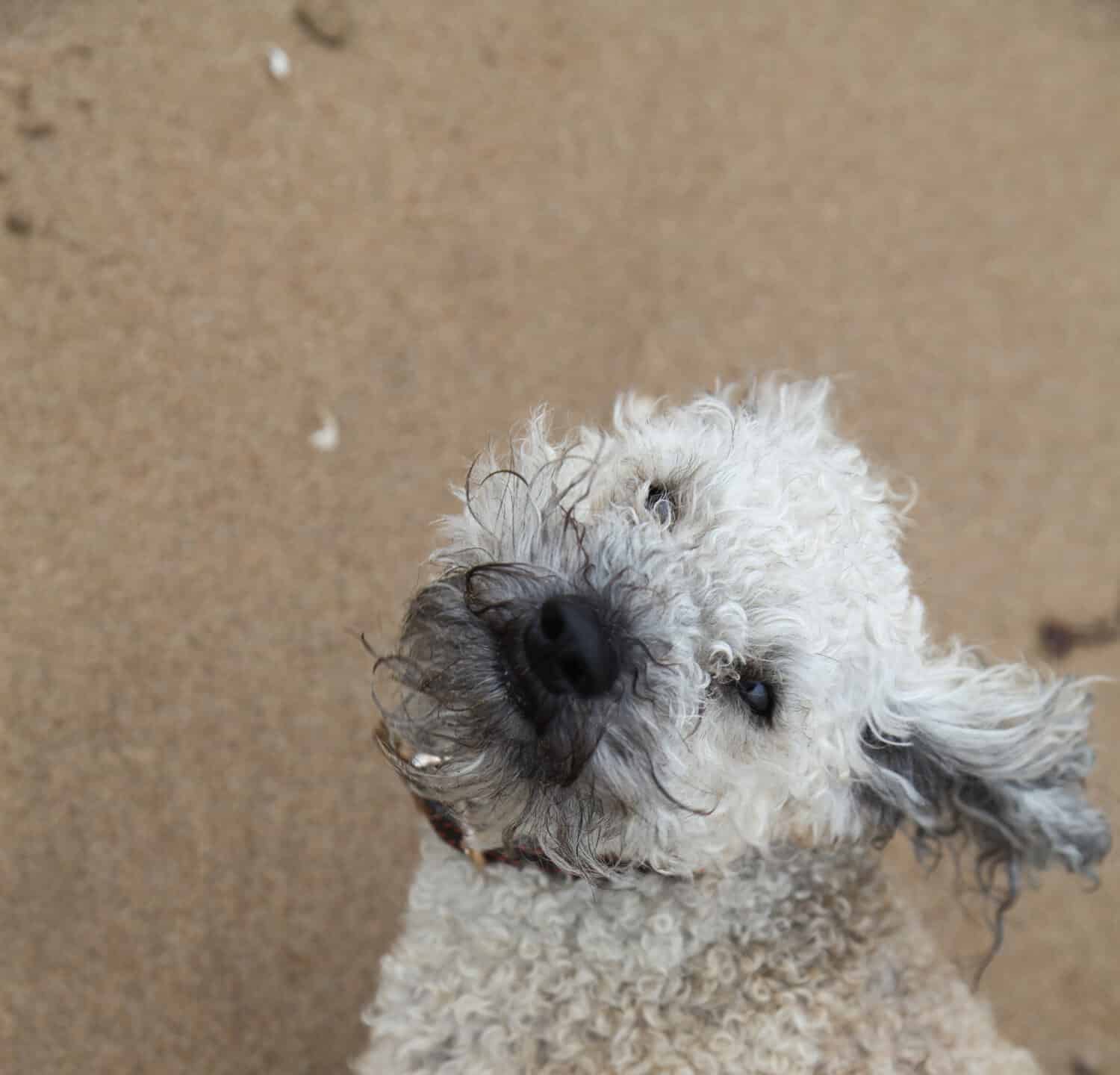
Sable Cavapoos are considered rarer compared to other colors and patterns.
©Matt Sheppard/Shutterstock.com
White
White Cavapoos are middle ground regarding rarity or commonality. They have a presence of the white gene in both parent breeds, the Cavalier King Charles Spaniel and the Poodle. The likelihood of a white or cream-colored offspring is especially high if either or both parents carry this gene. White Cavapoos might come in a solid, snowy white, off-white, or mixed with other colors, creating white patches or a white and another color pattern, such as the mentioned earlier parti-color pattern.
Chocolate or Brown
Another slightly rare Cavapoo color is chocolate or brown. Although not as common as other colors, chocolate, and brown Cavapoos are easier to find than the black or tri-color variations. This color can range from a deep chocolate brown to a lighter cafe-au-lait shade. Chocolate or brown Cavapoos might also have white or tan markings, especially on the chest, paws, and tail.
Tri-Color
Another uncommon color in Cavapoos is the tri-color, featuring black, white, and tan hues in a distinct pattern across their bodies. Other variations can occur, such as red, white, and tan or chocolate, white, and tan. These tri-color Cavapoos are breathtakingly beautiful but rarer than other colors due to the complex genetic combinations required to produce this specific pattern. You can find the tri-color in the Cavalier King Charles Spaniel, but mixing with the Poodle genes can dilute this pattern, making it a rare sight in Cavapoos.

Tri-color is rarer than other colors due to the complex genetic combinations required to produce this specific pattern.
©Dagmar Hijmans/Shutterstock.com
Black
Black Cavapoos hold the position as one of the rarest. The reason for this rarity is rooted in the genetics of the parent breeds. Neither the Cavalier King Charles Spaniel nor the Poodle is dominantly black, making it less likely for the offspring to inherit this coat color. However, a black color Cavapoo can result from a recessive gene from the Poodle. Black Cavapoos are often pure black, but they can also have some white markings, mostly on their chest and paws.
Phantom
Another rare Cavapoo color is phantom. Phantom Cavapoos got their name for their distinctive two-color pattern, where a darker color covers the “points” of the dog – their eyebrows, muzzle, legs, and under the tail. This pattern is more common in Poodles, hence its presence in Cavapoos, although it’s still not very common. A typical phantom Cavapoo could be black and tan, where the main body is black, and the “points” are a rich tan color.
Merle
Merle Cavapoos are one of the rarest, owing to the complexity of the merle gene. The merle pattern creates a mottled or patchy color arrangement, typically with a light base and dark patches. However, it’s noteworthy that neither the Cavalier King Charles Spaniel nor the Poodle are predominantly merle breeds. Therefore, breeding a merle Cavapoo can only occur if the Poodle parent carries the rare merle gene.
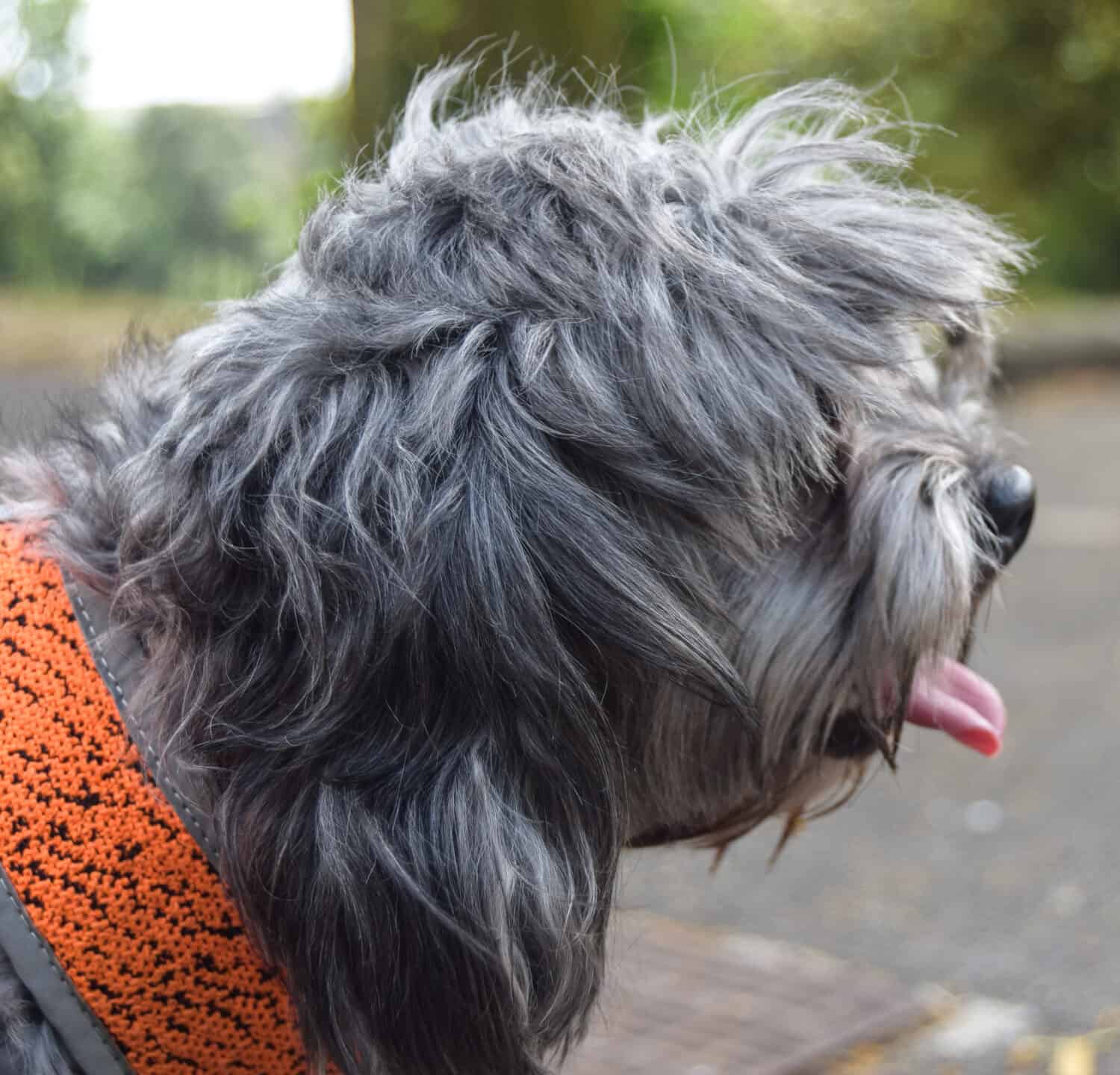
Merle Cavapoos are arguably the rarest color combination.
©Wafflemama/Shutterstock.com
Cavapoos presents a rich array of colors and patterns, each enchanting in its way. Their color diversity is a testament to their mixed-breed heritage and part of what makes each Cavapoo uniquely adorable. As always, it’s important to remember that the color of a Cavapoo’s coat doesn’t determine its personality or health; love, proper care, and attention are the crucial elements that contribute to a happy and healthy Cavapoo life.
Other Cavapoo Characteristics
One of the first things you’ll notice about Cavapoos is their affectionate nature. These dogs thrive on companionship and have an inherent desire to bond with their human families. Whether it’s curling up on the couch, accompanying you on walks, or following you around the house, Cavapoos love spending quality time with their owners. Their affectionate temperament is a trait inherited from the Cavalier King Charles Spaniel, known for its unwavering loyalty and love for human companionship.
Cavapoos also display considerable intelligence, a characteristic they inherit from their Poodle parent. They are quick learners, which makes them relatively easy to train. They respond well to positive reinforcement techniques, such as treats and praise, and are generally eager to please their owners. Given their intelligence, Cavapoos also benefit from mental stimulation, such as through puzzle toys and obedience training.
Friendly and Adaptable
When it comes to adaptability, Cavapoos are second to none. Their small size makes them suitable for both apartment living and larger homes, as long as they have enough space to move around and play. They are also known for their adaptability to different climates.
However, their adaptable nature doesn’t mean they enjoy being alone. It is quite the contrary. Cavapoos are prone to separation anxiety and prefer to have company most of the time. This trait makes them a less suitable choice for owners who spend long hours away from home. They flourish in environments where they have regular human interaction and mental and physical stimulation.
Despite their small stature, Cavapoos carry a lot of energy and require regular exercise to maintain their health and happiness. Daily walks, along with playtime, can keep a Cavapoo physically fit and mentally stimulated. However, their exercise needs are not as demanding as some other breeds, making them suitable for individuals or families who lead a moderately active lifestyle.
Friendly and sociable, Cavapoos usually get along well with other animals and are generally good with children. They have a cheerful disposition that can be quite contagious, and they tend to bring a lot of joy and warmth into their homes.
Overall, the Cavapoo is a breed that combines the best characteristics of its parent breeds into a small, adorable package. Their affectionate nature, intelligence, adaptability, and sociability make them perfect pets for various households. However, like any breed, they have unique needs and require regular companionship, mental stimulation, and moderate exercise. Prospective Cavapoo owners should ensure they can meet the breed’s needs before welcoming one into their home.
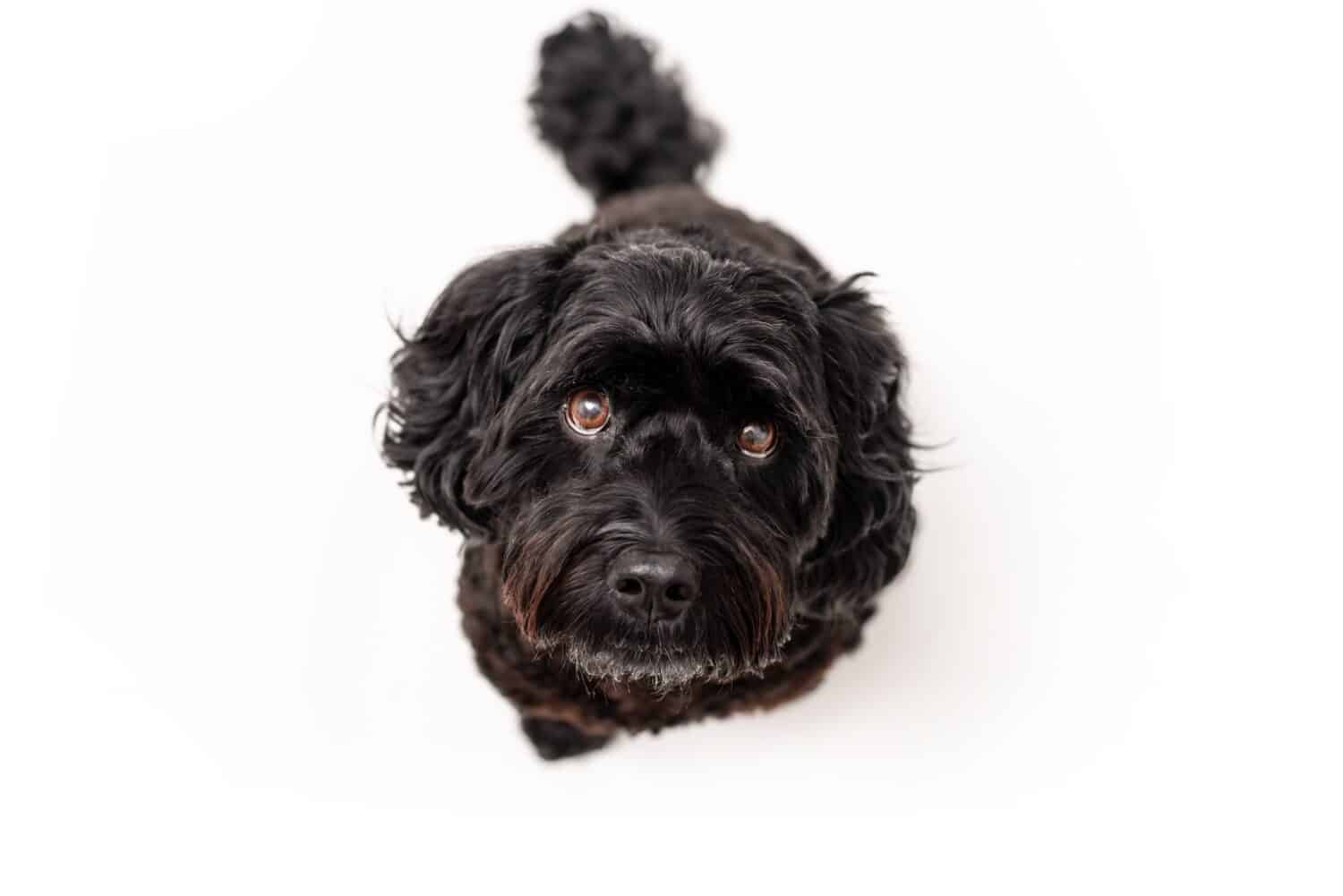
Fully black Cavapoos are far less common than cream Cavapoos.
©Life In Pixels/Shutterstock.com
Conclusion
To conclude, Cavapoo colors consist of a wide variety and range drastically from rarest to most common. Each color and pattern carries a unique allure that adds to the appeal of these lovable companions. Regardless of color, all Cavapoos share similar temperaments and characteristics, including a friendly demeanor, intelligence, and affectionate nature, making them one of the most beloved breeds worldwide.
And if you’re thinking of adopting a Cavapoo into your family, it’s a reminder that while the color of their coats may be an aspect of your purchase decision, the love, care, and companionship they require should be of foremost importance.
The photo featured at the top of this post is © David Calvert/Shutterstock.com
Ready to discover the top 10 cutest dog breeds in the entire world?
How about the fastest dogs, the largest dogs and those that are -- quite frankly -- just the kindest dogs on the planet? Each day, AZ Animals sends out lists just like this to our thousands of email subscribers. And the best part? It's FREE. Join today by entering your email below.
Thank you for reading! Have some feedback for us? Contact the AZ Animals editorial team.






